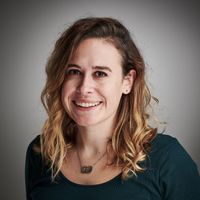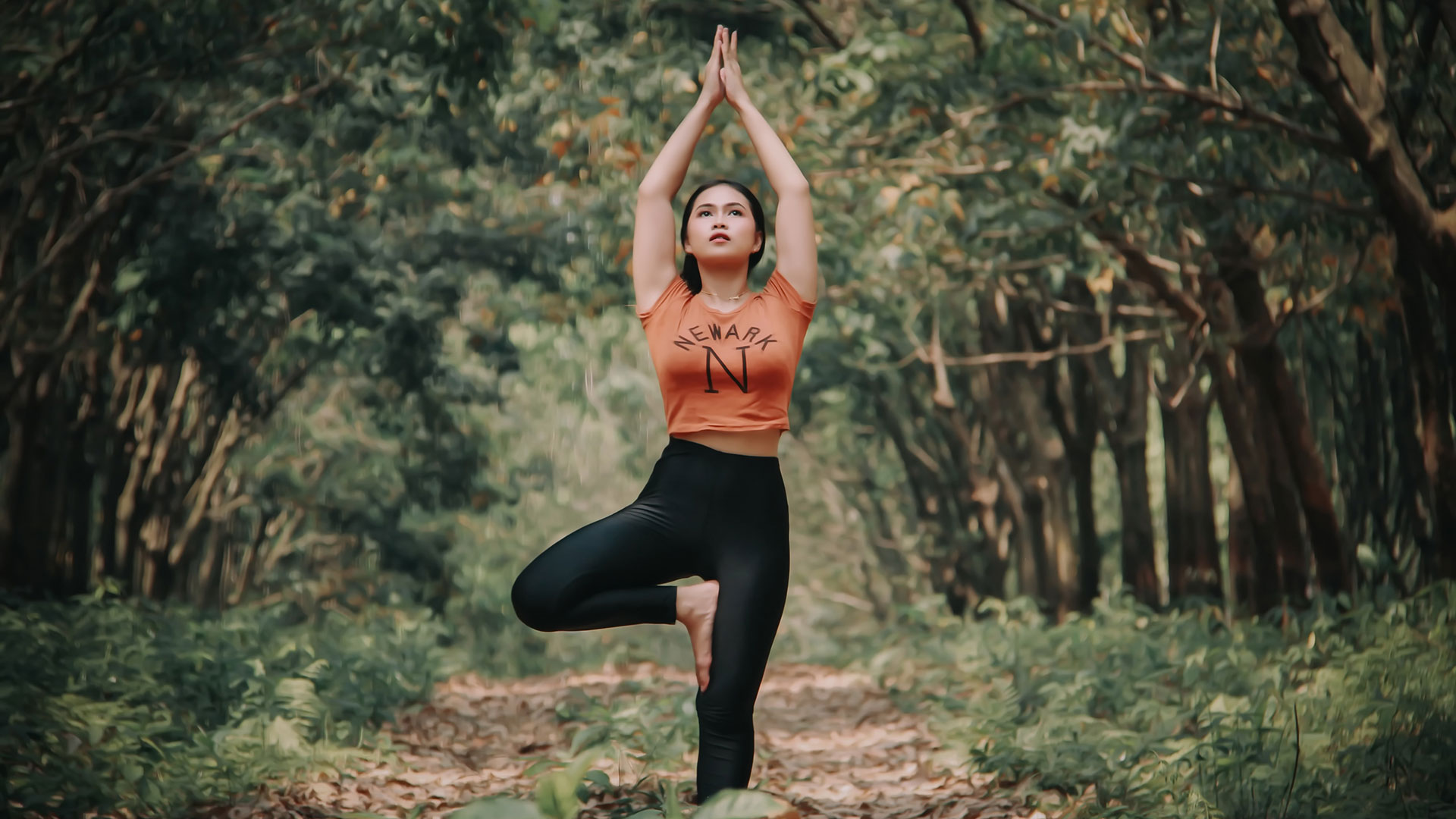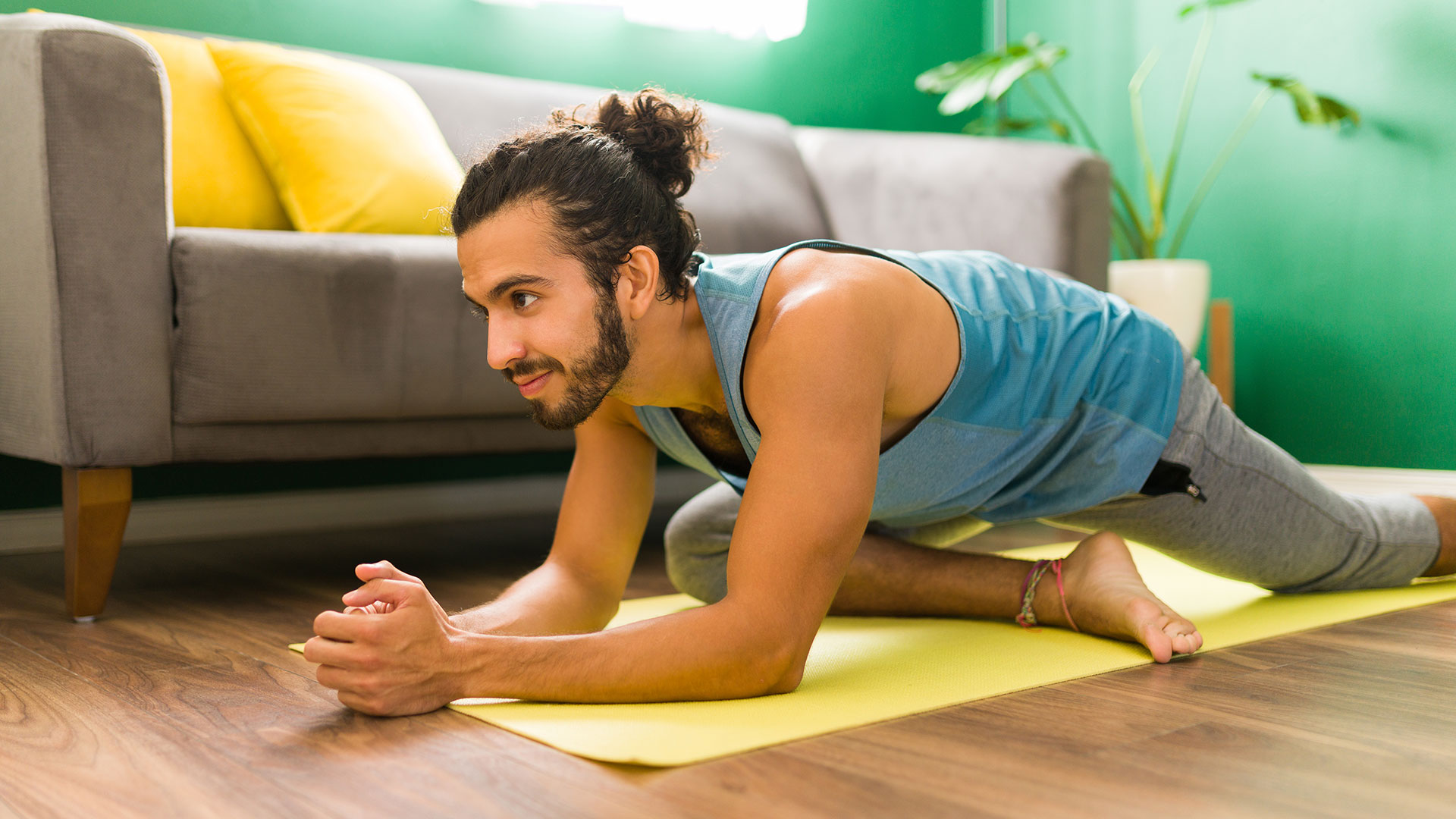7 common yoga poses and exactly what they do to your body
The simplest postures can have the biggest benefits

While many turn to yoga for its mental health benefits, it can also be beneficial from a physicial point of view, with effects on strength, flexibility and balance. You can even use yoga to get you fit. You don't need to be twisting yourself into pretzels to feel the benefits of yoga – in fact, some of the simplest poses can have the most significant effects.
To illustrate exactly that, the fitness experts at sports brand sweatband.com have put together this list of beginner-friendly yoga poses, along with their benefits. You don't really need anything to try these poses, although it's helpful to have a mat that'll provide support and padding under your wrists and knees (our best yoga mats guide has some recommendations), and a pair of good yoga pants will ensure you aren't restricted in your movements.
Yogi squat

What are the benefits?
The Yogi Squat position helps to stretch the groin muscles as well as the lower back, whilst simultaneously aiding to relieve strain sensations in your hip flexors and knee joints.
How do you do it?
For this one, stand straight upright with your feet parallel and slightly wider than hip distance – this is your starting position. Transition slowly by bending your knees and lowering your pelvis. The end goal is a position where your hips are lower than your knees. Bring your hands into a prayer position and keep your back straight.
Cat-Cow pose
What are the benefits?
Get all the latest news, reviews, deals and buying guides on gorgeous tech, home and active products from the T3 experts
The Cat-Cow sequence is a posture-fixing powerhouse, and can also help ease back pain. As well as having benefits in terms of balance and poise, it can help increase strength and range of motion in the arms, neck, back and core.
How do you do it?
Start on all fours on a mat. Ensure your knees are lined up with your hips and your hands are placed directly below your shoulders. Begin with the Cat part – arching your back downwards, pushing your head and tailbone to the sky. Transition into the Cow pose by arching your back in the other direction (upwards) while simultaneously lowering your head. Try and move in time with your breath.
Downward Dog

What are the benefits?
When people say yoga, this is usually one of the first images that comes to mind. If you do it correctly, there can be benefits that extend to your full body. It can help improve your body’s overall flexibility, through decompressing the spine, opening the shoulders and toning the arms. If held for longer periods, it can help build strength, too.
How do you do it?
Start in a high plank position, then slowly lift the hips and buttocks away from the ground all the way towards the ceiling. Keep your arms and legs in place, with your head between your arms, gazing to your knees. You're aiming to make an inverted V shape with your body.
Tree pose

What are the benefits?
This one's easy to understand, but more difficult to do. Tree pose is primarily used to stretch the body long across a linear path of alignment from top to bottom. It will also release muscle tension and help improve balance.
How do you do it?
Stand up straight, with a neutral spine. Bring your hands together into a prayer position in front of you, then slowly raise them above your head. Using your right leg as a stable base, bend your left knee out to the side, bringing your left foot to rest on the inner thigh of your right leg. Hold, then repeat on the other side.
Pigeon pose

What are the benefits?
This pose is popular with runners, and for good reason. It not only works to loosen your hip flexors, but it also aids in relaxing your glutes and lower back – all prominent concerns for runners, resistance trainers and anyone physically active.
How do you do it?
Start on all fours, then move your right leg forward as if you were going to move into a lunge position. Instead of placing your foot down, shuffle your foot over towards the left and bring your right knee to the floor on the outside of your right hand. Now release your left knee from the mat and point your leg straight out behind you. Square your hips up and slowly lean your torso down over your right leg. The end aim is to have your shin parallel to the top of the mat, but this is a flexibility challenge, so while you're working on it, your foot will more likely be closer towards your groin. Don't forget to repeat on the other side.
Child’s pose

What are the benefits?
This pose is designed to help to unclog the mind of stress and worry, and help you chill out. Some people even find it helps them sleep better. There are body benefits too, though: Child's Pose is a fantastic stretch for the lower back and shoulders.
How do you do it?
This one is easy and relaxing. Begin by being on all fours and extend your hands and arms forward into a stretch, with your knees spread towards the edges of your mat, with toes untucked and tips of the big toes together. Lower your torso between your thighs, and relax! This one can also be done with your knees together, and your upper body resting on your thighs, if you find that more comfortable.

Ruth was T3's Outdoors and Wellness Editor from 2020 to 2022, covering hiking, camping and adventure sports kit, as well as mattresses, sleep accessories, yoga and general wellness. She's now a Homes Editor at sister site TechRadar, where she deals in all things air (vacuum cleaners, robovacs, fans and air purifiers), and hair (hair dryers, straighteners and stylers).